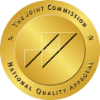The curve and its variations that we see today actually took shape over a period which spanned a dozen years. It is important to see the path of development in order to show how Jellinek modified and revised his initial addiction theory to its most identifiable iteration.
The Original 1946 Study
The origins of the Jellinek Curve can be traced back to a 1946 paper, Phases in the Drinking History of Alcoholics: Analysis of a Survey Conducted by the Official Organ of Alcoholics Anonymous. Published in the Quarterly Journal of Studies on Alcohol, Jellinek postulated a theory of the trajectory of alcoholism. He based this theory from answers that were part of a 36-question survey that was displayed on the front page of theGrapevine, which is the journal affiliated with Alcoholics Anonymous.
From the data, he postulated a series of basic phases that an alcoholic experiences. Starting with the basic phase where a person first drinks and gets drunk and may start “stealing drinks” and drinking on the weekend, they move to an intermediate phase where they may start drinking mid-week, drink during the day or may engage in “benders.” This initial theory also included a terminal phase in which the alcoholic reaches their lowest point and experiences significant physical and personal loss as a result of their drinking.
One point of contention regarding this study was the small number of samples Jellinek drew from to perform statistical analysis. Of the 1,600 surveys sent, only 158 were returned and from those returned, 45 were thrown out because they were indecipherable and the 15 that were completed by women were also discarded. While publishing a major study with such a small sample size raises concerns, Jellinek seemed to be optimistic this study would be the start of further and more intensive research.
“If you look at when he developed (the theory that led to the Jellinek Curve), and where we were at with research and science, it wasn’t common practice at that time to do statistical analysis,” stated Debra Murray Psy. D., program director of the Mental Health Counseling Program at Viterbo (WI) University. She further adds that there were obvious limitations in the study, but it was the first attempt to move the mindset of alcoholism away from the moral framework that was dominant in that time period.
“The Phases of Alcohol”—the 1952 Study
Over the next several years, Jellinek would refine this initial theory and a more detailed questionnaire would be created and administered to over 2,000 male alcoholics. With the results of this survey, he wrote a follow-up article entitled, “Phases of Alcohol Addiction.” Published in 1952, he further elaborated on his original theory and came up with four distinct phases of the progression of alcoholism. Ranging from the pre-alcoholic stage where drinking is seen as socially motivated, it moves through stages where drinking becomes more psychologically reinforcing. From that point, the remaining stages deal with the onset of dependence, addiction and then a chronic phase where the significant physical and mental symptoms emerge.
The Curve Takes Shape
The Jellinek Curve that is most identifiable today took its final shape in the late 1950s—with help from a pioneer in the field of alcohol treatment and rehabilitation. Max Glatt, a British psychiatrist and the founder of the Alcohol Treatment Unit at Warlingham Park Hospital in England, revised the phases of alcoholism outlined by Jellinek. During his time in the alcohol unit, Glatt had noticed that former patients had common recovery experiences and stories after leaving treatment and resuming their daily lives.
In order to account for these experiences, Glatt had modified Jellinek’s phase to include the recovery process—and thus the curve, as is understood today, took its final shape. This U-type curve represents in essence the full progression of how alcoholism (and addiction by proxy) occurs in individuals. Starting at the left side of the curve, an individual starts the progression with “occasional relief drinking” and gradually starts experiencing the physical, psychological and social costs of their growing dependence on alcohol.
However, once the alcoholic (or addict) sincerely reaches out for help, they experience an event on the upswing of the curve that will lead them to sobriety and, ideally, lasting recovery. These events include learning about alcoholism as an illness, seeking treatment, examining the physical and spiritual needs, employing new life and coping skills and receiving additional support. There is an interesting point of note: while Jellinek himself didn’t collaborate with Glatt on this addition, the representation of the curve that we see today is known as the Jellinek Curve.
The Role of the Jellinek Curve in Recovery
Many people in the recovery community have differing philosophies and opinions in regards to addiction and how addicts recover. No matter what the opinion may be, the Jellinek Curve can be a learning tool that anyone can apply. “It’s application is general, and not specific to any one individual, and it’s because everyone is different,” states Dr. Clark Gaither, author of the new book, Powerful Words. He further illustrates that the curve is a progression on not only the continual losses one experiences in addiction, but also one of the gains people receive when they find recovery.
Ultimately, the Jellinek Curve’s best purpose may be as a way for people to understand their own struggles with addiction and not as a diagnostic tool. “It’s a learning tool. It’s a visual and it’s a way that people can kind of normalize (in the sense of) ‘this is what happens to some people.’”
Tim Powers is a writer from La Crosse, Wisconsin. He last wrote about survivor’s guilt.
Original Article from TheFix.com
Red Rock Recovery Center is a Colorado state licensed substance abuse extended care treatment program designed to help you or your loved one recover from the struggles associated with alcoholism and drug addiction. Located in Denver, Colorado we offer a safe haven for those afflicted by the ravages of untreated addiction. Our program is based on a compassionate 12-step model that applies behavioral as well as life skill therapies, which will enable our clients to heal and recover.
#recovery #drugrehab #redrockrecovery




